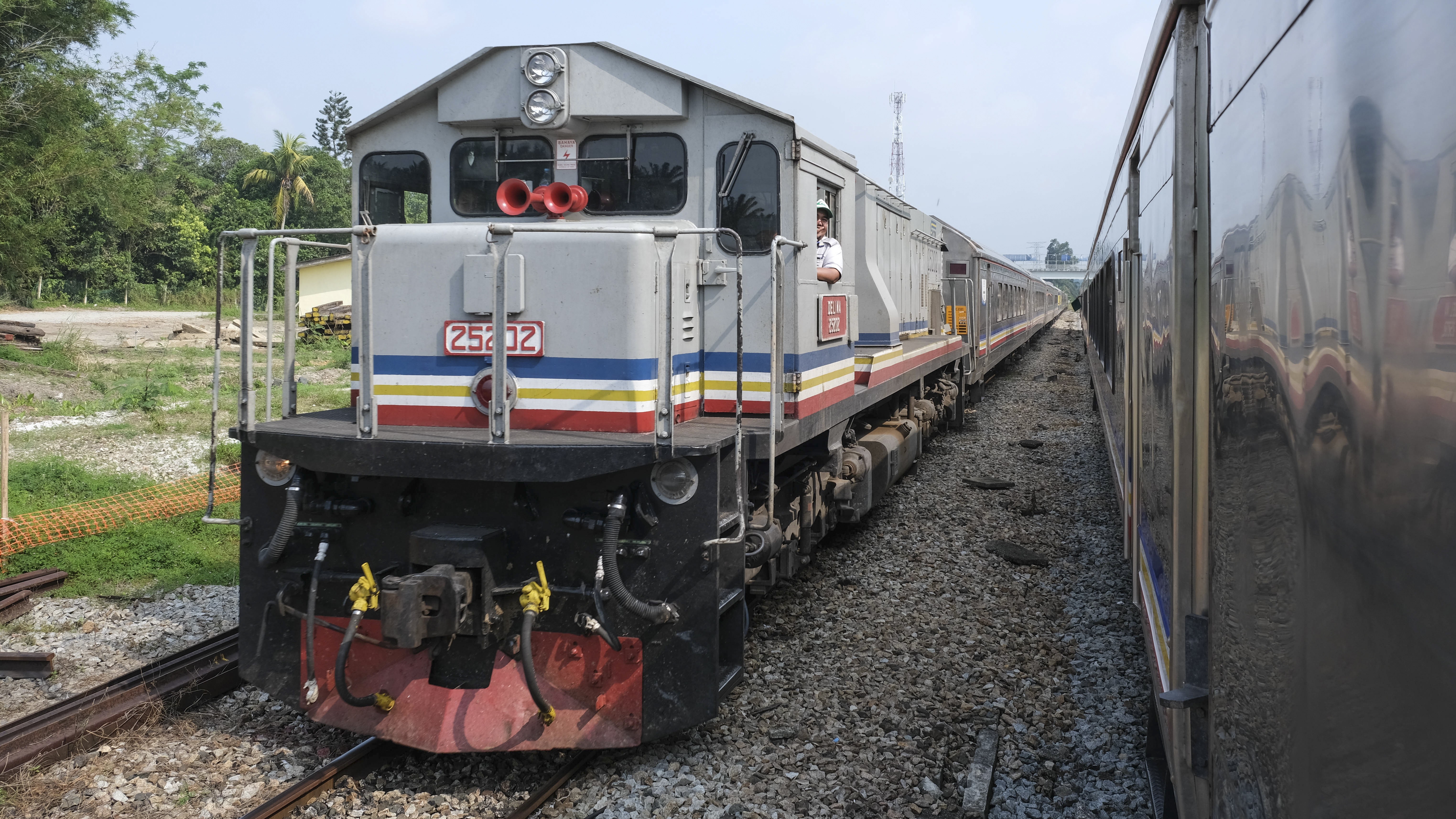See southern Malaysia’s rural charm at a gentle pace by train
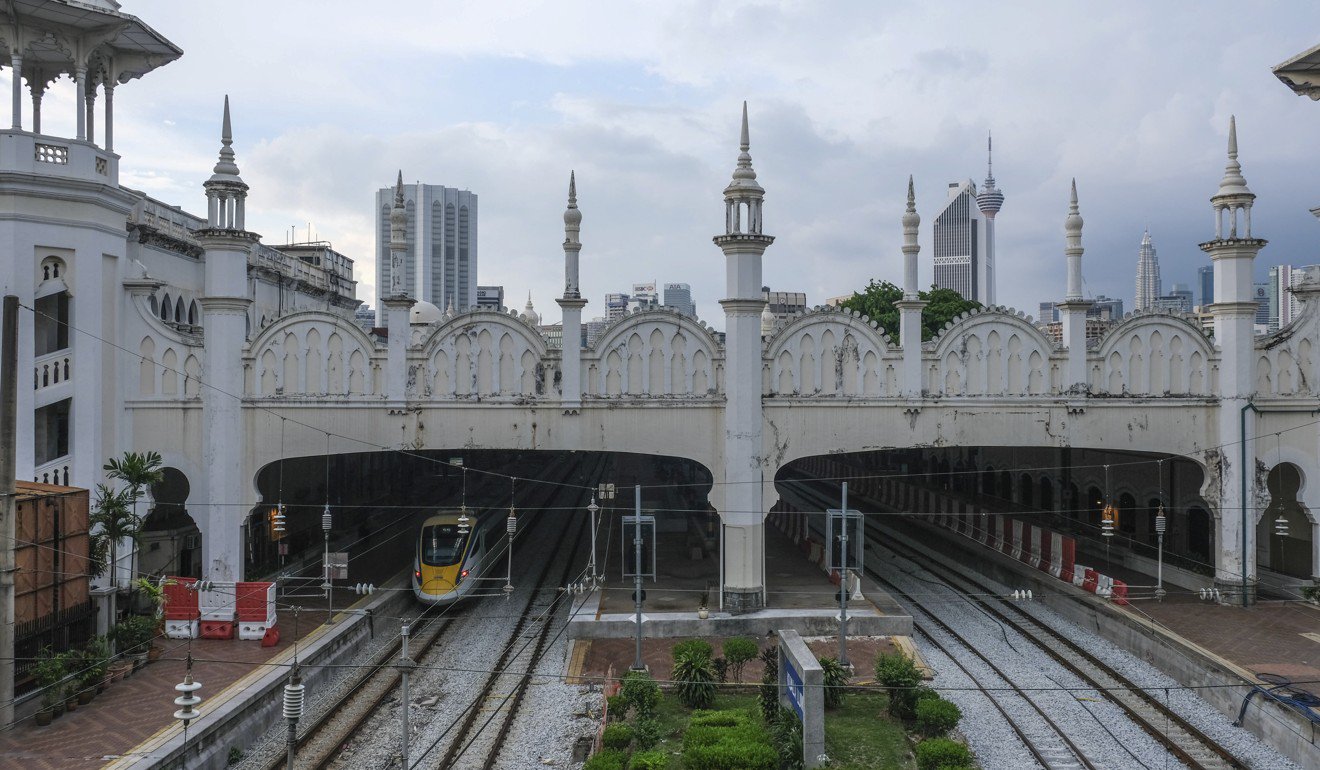
Singapore to Kuala Lumpur by train: see southern Malaysia’s rural charm at a gentle pace
- Direct rail services between the Lion City and Kuala Lumpur ended in 2011, but it is still possible to cover almost all of the famous route by train
- The first leg of the journey takes passengers past shimmering green plantations and through small towns with rows of ageing Chinese shophouses
When the last train departed from Singapore railway station just after 11pm on June 30, 2011, Sultan Ibrahim Iskandar of Johor was at the helm. The sultan, who also flies jets and helicopters, and skippers yachts, had learned to drive trains especially for this occasion.
It slowly made its way northwards along the ageing rails that once cut a tree-lined path across the island, before crossing over the causeway linking Singapore and Malaysia and pulling into the modern expanse of Johor Bahru Sentral station, now the southern terminus for the Malaysian rail network.
With tickets booked, the whole journey is stress-free and easily managed, leaving plenty of time to enjoy a good book and the leisurely ride across the bottom half of Malaysia.
Woodlands Train Checkpoint, a nondescript station at the northern tip of Singapore, serves as the starting point for any rail journey leaving the island state. In keeping with the spirit of trying to do the journey by rail, take Singapore’s fantastic metro to Woodlands MRT station (and a short bus ride on #911 to the checkpoint).
After passing through Singaporean and Malaysian customs in less than 20 minutes, the actual journey over the Johor Strait takes mere minutes.
While it is possible to make the Woodlands to Kuala Lumpur journey in one day, this is subject to ticket availability of the popular cross border shuttle, so it might be necessary to cross the causeway during off-peak hours and spend the night in Johor Bahru before starting the journey north the next day.

Sitting just across from Singapore, Johor Bahru is developing into an affordable commuters’ option for workers in Singapore. A small historic quarter and the unique British colonial-era mosque – complete with clock tower – offer easily accessed sights near the large new station and attached malls, but there isn’t much to attract visitors for more than a day.
From JB Sentral station, the 10.10am (8.25am on weekends) train is the only one that allows Kuala Lumpur to be reached in a single day, travelling slowly up Malaysia’s West Coast Line to the sleepy town of Gemas, where a train change is needed.
Strolling along the town’s quiet streets and the abandoned old wooden railway station makes for a great distraction during the wait for the next train.
But first, there is the highlight of the journey – the 4¾-hour ride across southern Malaysia.
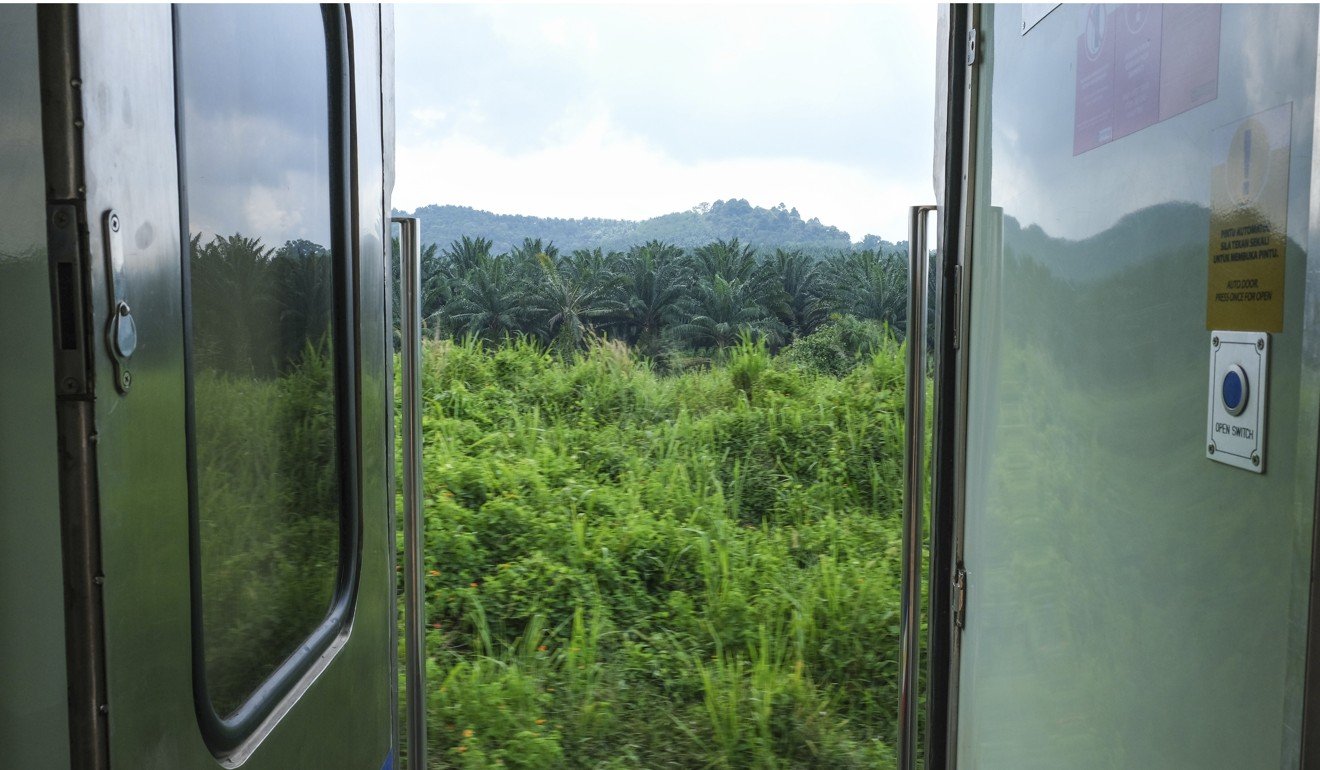
Choose a window seat on the left of the train to take in the splendour of Johor Bahru’s Arulmigu Sri Rajakaliamman Glass Temple, instantly recognisable as Malaysia’s only glass-jewelled temple, glittering brightly in the morning sun.
The urban landscape quickly disappears, replaced with seemingly endless miles of palm oil plantations supplemented only briefly with rubber and banana groves. This route through rural southern Malaysia offers glimpses of a world removed from the skyscrapers and mega malls of Kuala Lumpur or the tourist beaches of Langkawi.
Small towns and communities of bungalows and rows of ageing Chinese shophouses – which in Penang, Malacca or Ipoh draw many visitors – offer a view into Malaysia’s past; no McDonald’s or GrabFood signs here, just simple houses in need of fresh paint.
The trains on this leg of the journey are also relics; diesel-powered, and with doors that can be opened to the outside while the train is moving, they offer a closer, unobstructed glimpse of the world passing by – an increasingly rare rail experience as trains become faster across the region.
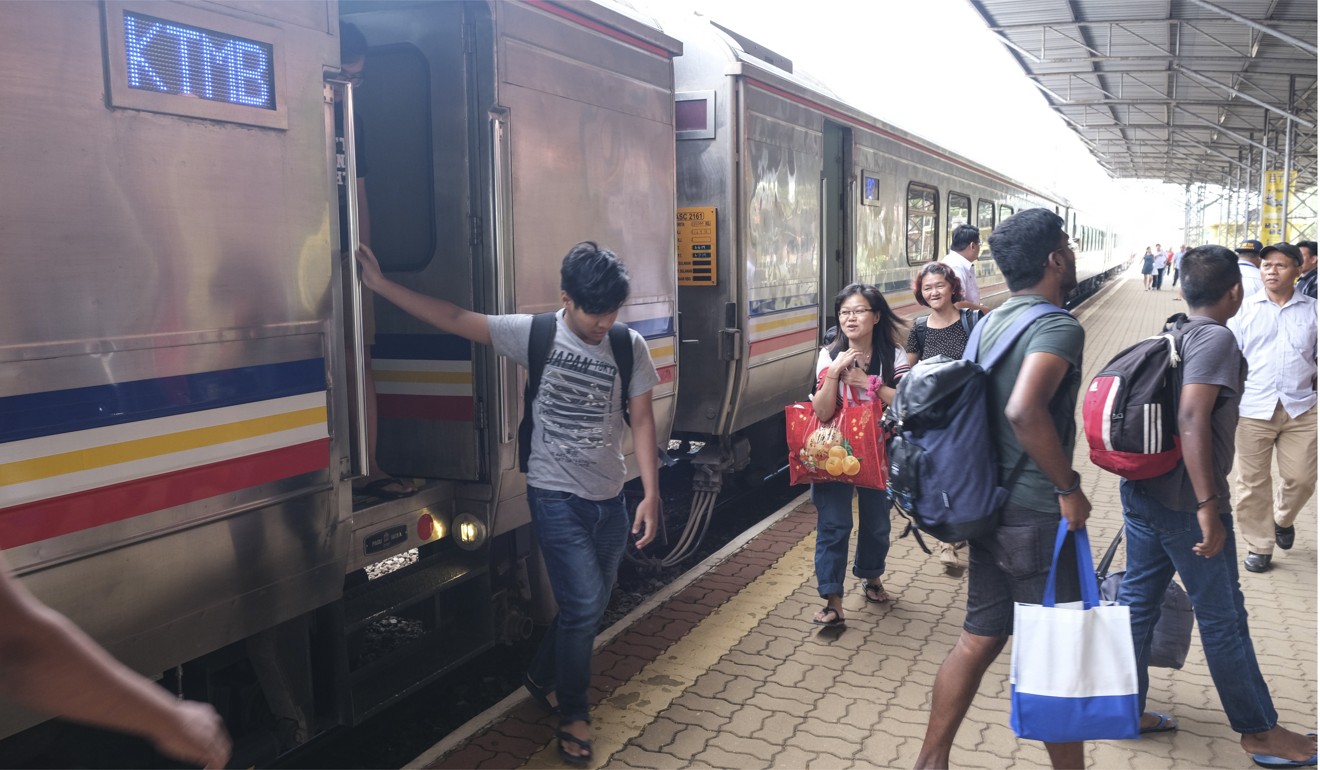
Indeed, these southern trains will only remain in use until the long-awaited electric upgrades to the national network extend beyond Gemas, where a train change is needed and lunch can be found.
While the delights of the Malaysian Railways snack carts will stave off dehydration and starvation, if not scurvy, the wait at Gemas gives plenty of time to find more substantial food. The KFC and Pizza Hut are the most visible options, but more rewarding local restaurants offering simple Chinese, Indian and Malay meals are also easy to find.
The 3.10pm electric train from Gemas northwards zooms up the remaining 170km of track towards Kuala Lumpur twice as fast as on the preceding section, thanks to new tracks and technology. It is no longer possible to open the train windows and doors to admire the landscape; instead, nature documentaries play on overhead screens as Malaysia passes in a blur. The view from the window now is of more prosperous towns with newer, bigger stations allowing better access to the business parks and commuter towns of comfortable suburbia.
Pulling into Kuala Lumpur signals the end of this part of the journey, and there is choice of stations at which to get off. The eponymous 1910 Indian-inspired masterpiece, with its ornate white towers and design displaying architectural influences from across the British Empire, offers a fittingly grand ending to the journey, and the nearby National Mosque and Islamic Art Museum should be on any visitor’s must-see list.
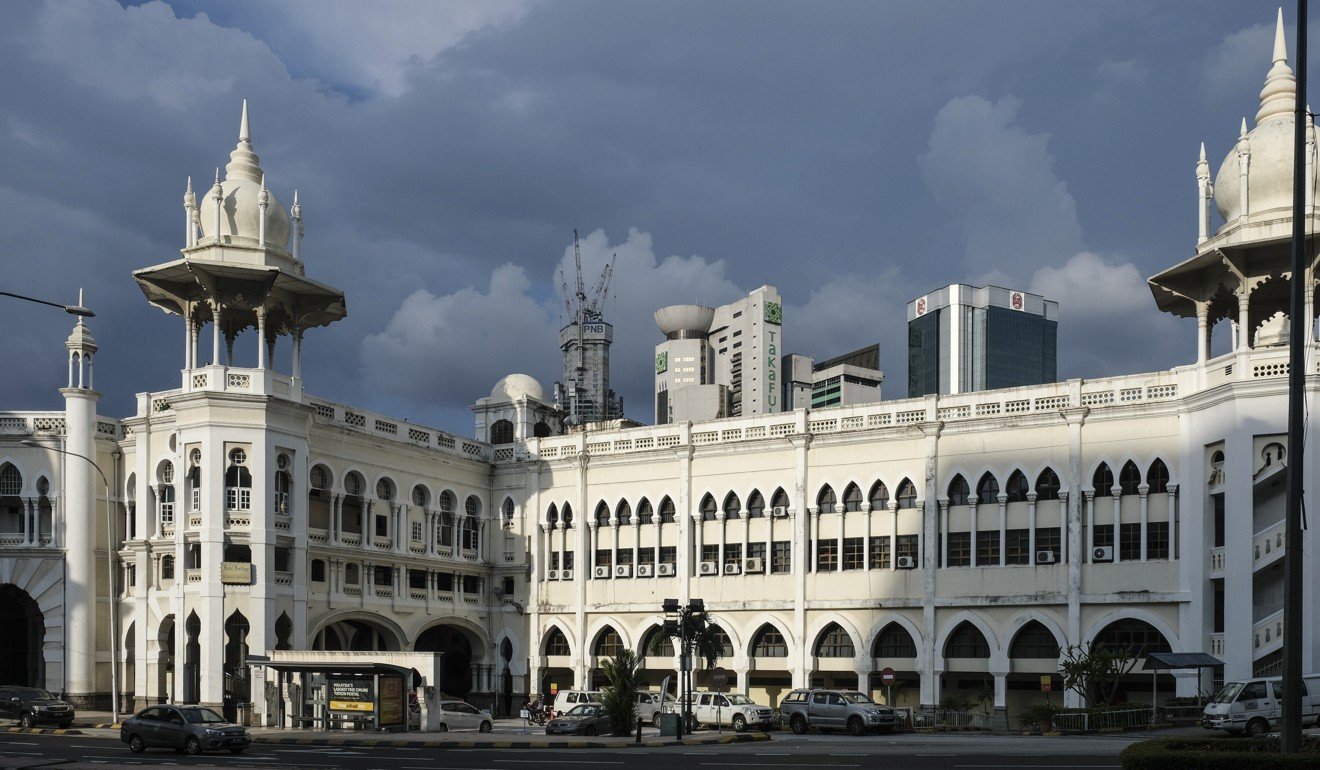
Alternatively, the newer station and malls of Kuala Lumpur Sentral (and the first to be reached if arriving from Gemas) are a wholly different experience. Here, Malaysia’s modernity and wealth is on display, shopping is king, and the nearby “Little India” neighbourhood of Brickfields provides delicious eating options.
This is the best station for onward connections across the city, country and beyond via KL Monorail, intercity bus routes, the airport express, and rail services north and south.
As the electrification of the railway south of Gemas continues, the present journey time will soon be halved, making the rail option a closer alternative to flying. But this will also be at the cost of some of the unique charm the present route still holds; new stations and malls will slowly replace the existing historic wooden stations and shophouses that lend the present journey such atmosphere.
For now, however, travellers looking for a different view of Malaysia, (or wishing to save some money) should have the train on their radar. Yes, it takes a long time and involves some changes of train, but conversation with the ever-changing roster of fellow passengers, and the opportunity to really get stuck into a book, add a timeless value to your journey that flying cannot offer.
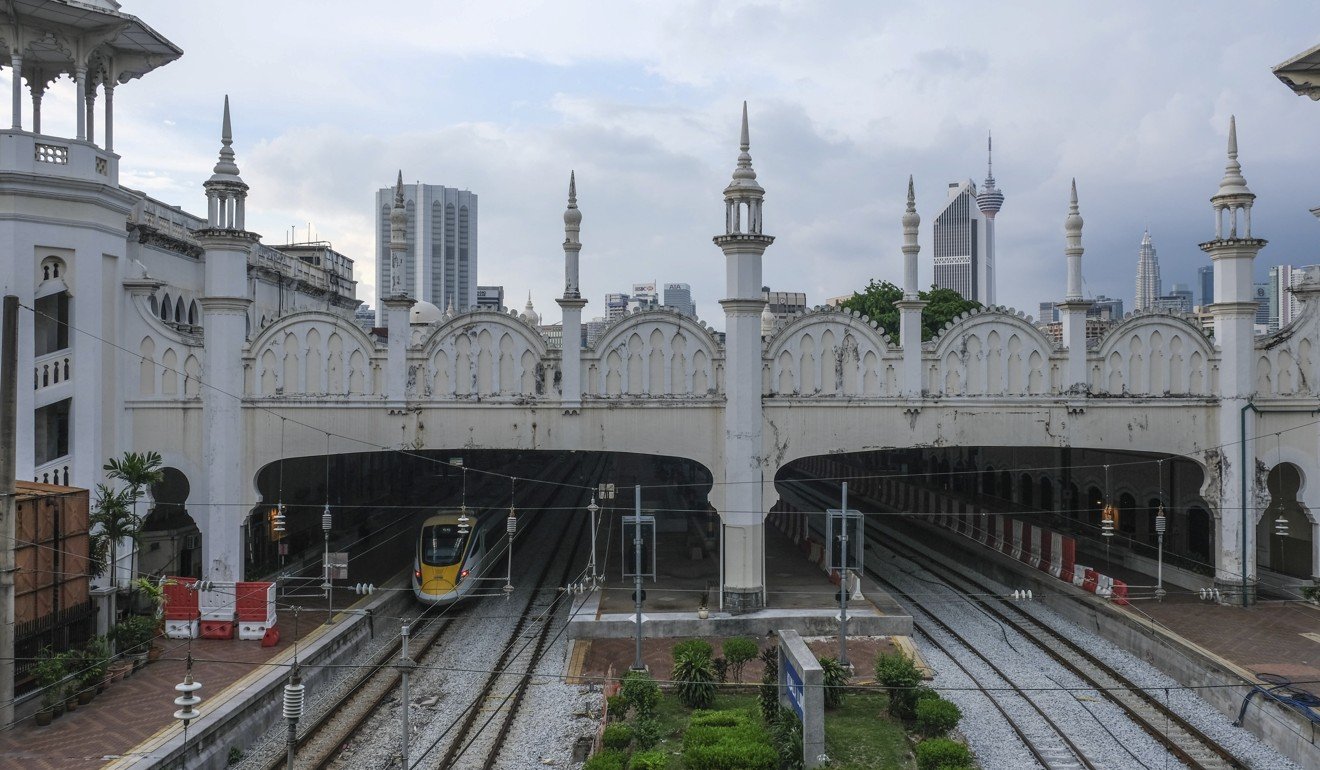
If you go:
With the popularity of the Woodlands-JB shuttle train for local commuting and shopping needs, you should book. Tickets for Woodlands (Singapore) to JB Sentral (Malaysia), and onwards to Gemas and Kuala Lumpur can all be booked at the Malaysian Railways website: ktmb.com.my
The whole journey costs around US$15.
It takes some 8½ hours to cover the 350km from Woodlands to Kuala Lumpur, and requires riding three trains, but signage and station announcements are clear and in English. The journey is equally possible heading the other way, from Malaysia to Singapore.
- Previous Scandal in Kuala Lumpur: Haziq taken to KL Hospital for medical examination
- Next Against Islamophobia: A false image of muslim men


